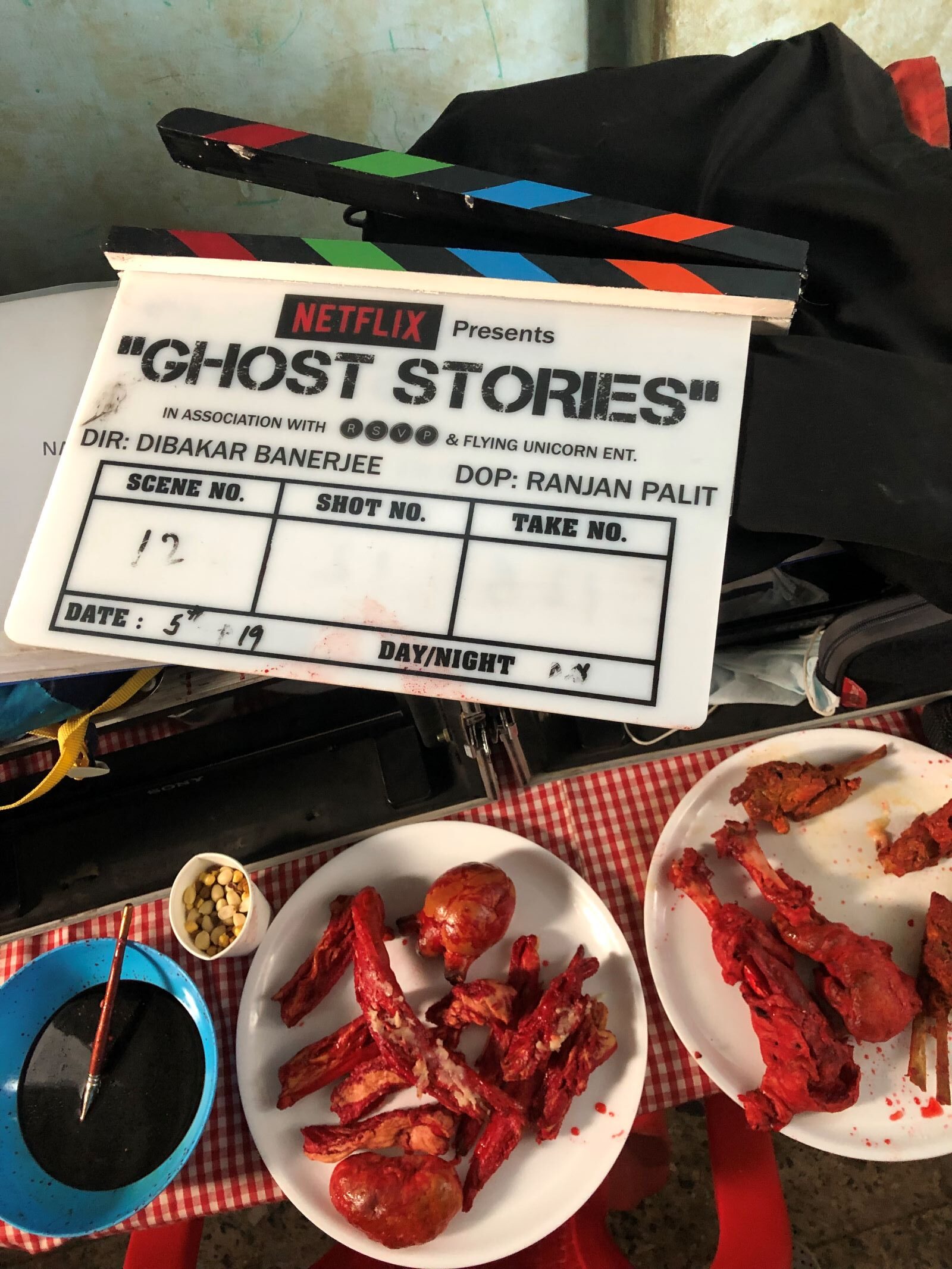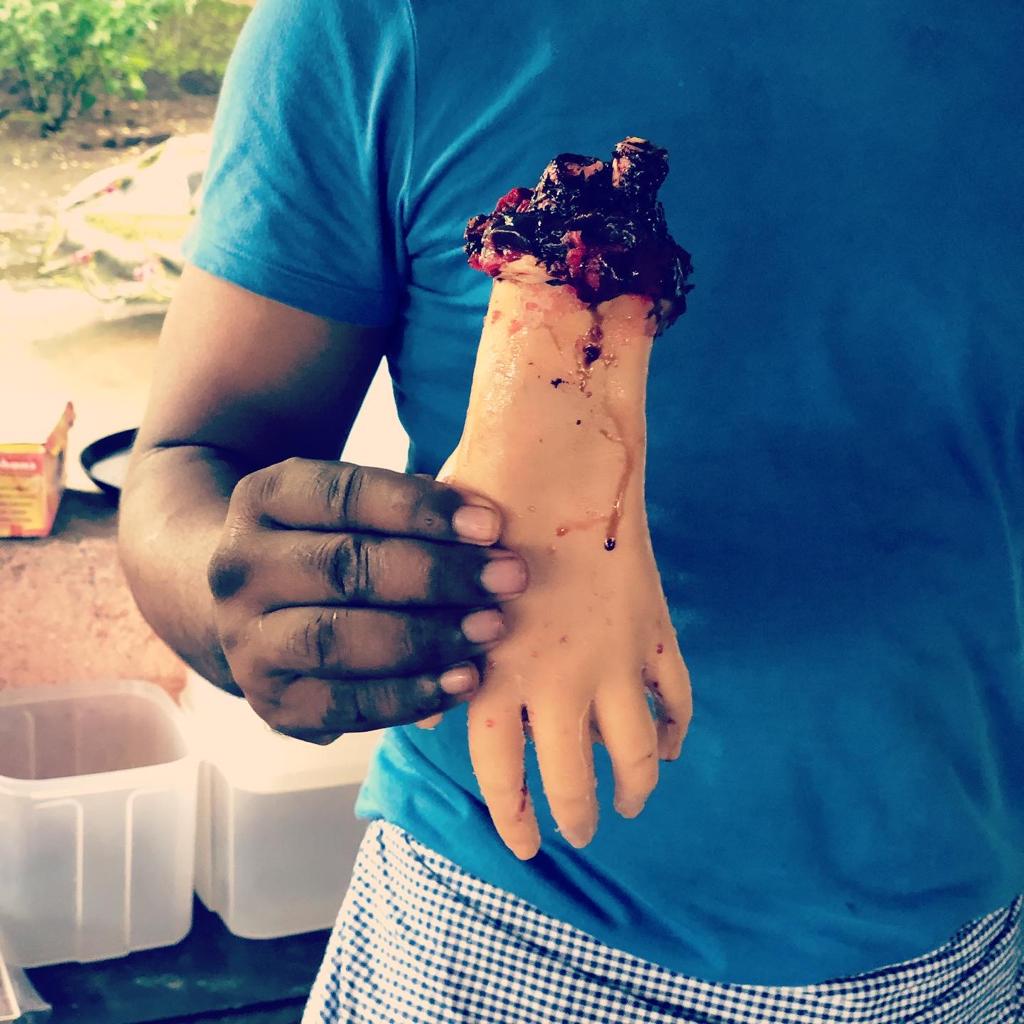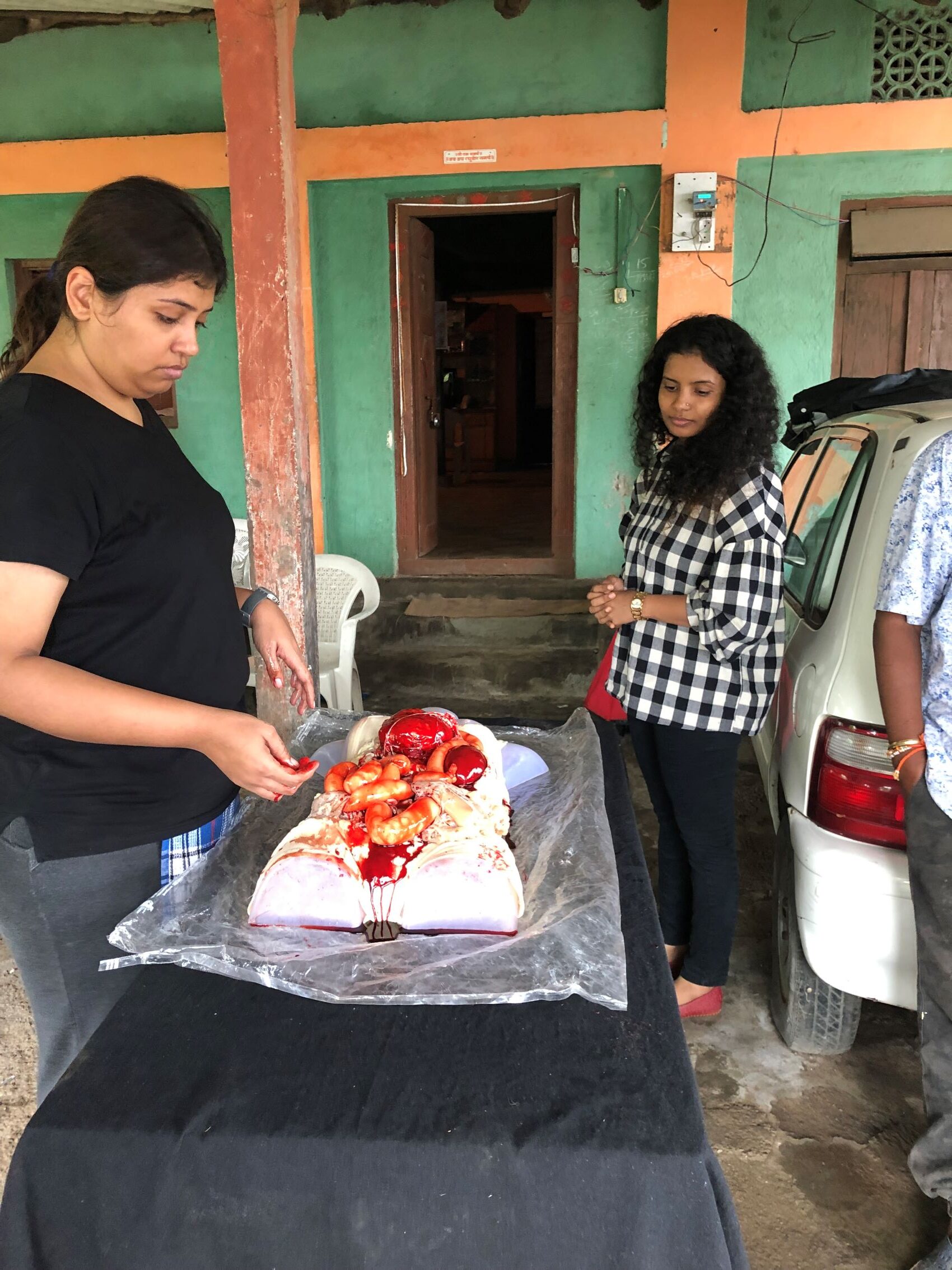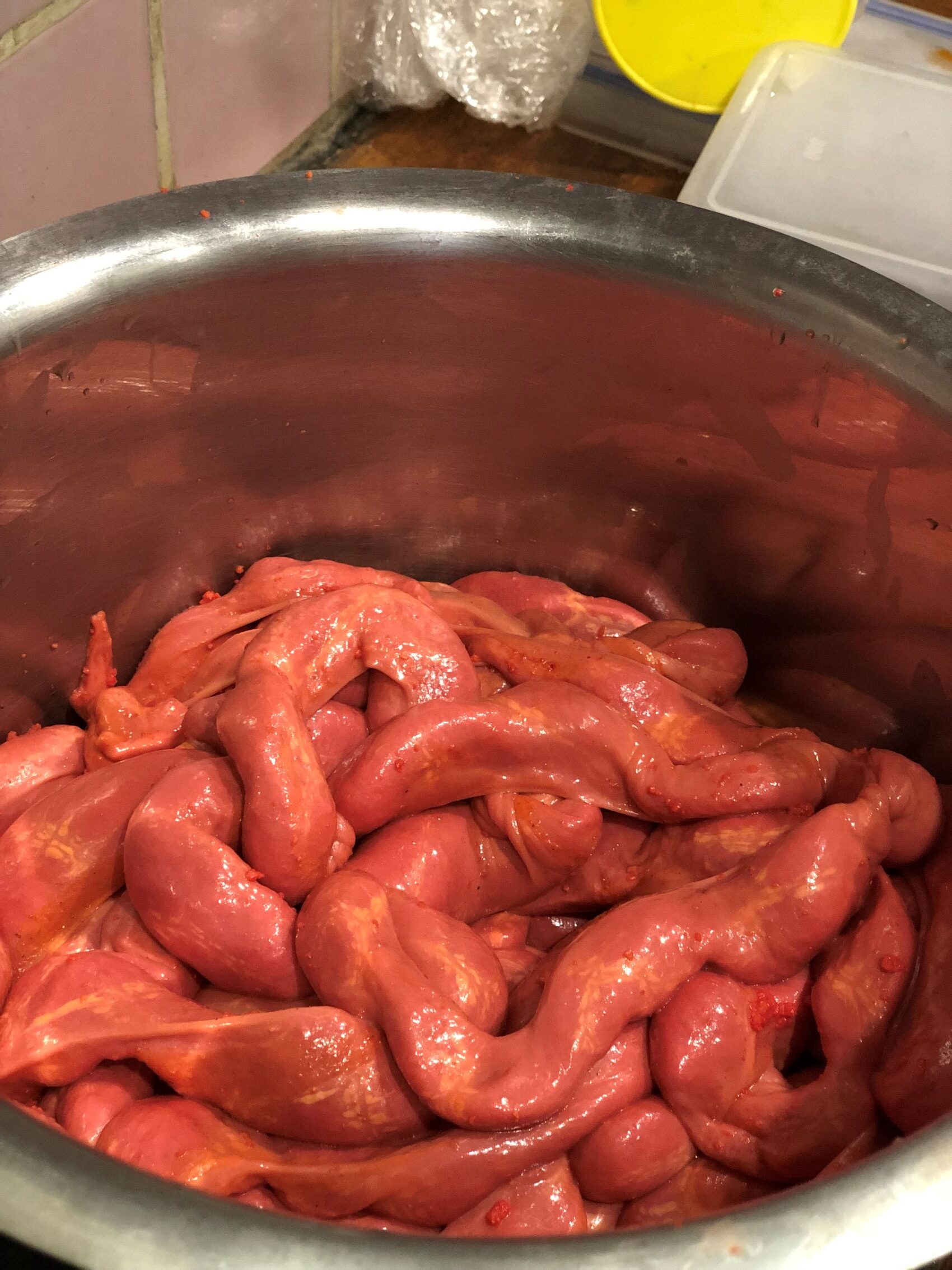Do you have the guts to read this story?
Food stylist Swati Desai who worked on Netflix’s Ghost Stories tells us how she made human entrails that were good enough to eat.
TW: Graphic images that might be disturbing to some people.
What Dibakar wanted was for his character to dive into a torn-apart human abdomen, and to pull out something, and chew on it. “Something chewy and stretchy,” as he described it.
I have been styling food for advertising for a decade. I seldom pick up movie projects, least of all something for an OTT platform. When I first got a call for Ghost Stories, I didn’t know what I was signing up for. The line producer asked me to come over to Dibakar Banerjee’s office for a casual introduction to the team. That was my first interaction with a team that, for many weeks, had been intensively researching the emotions of people who are turning into cannibals.
They were fine-tuning character sketches and making pretty concrete decisions since the series was to go on floor in the next two months. Into this milieu, I arrived with my solid experience of making the prettiest dal makhani, and drool-worthy sundaes. As part of the initial meeting with the team of Ghost Stories, I spent the next two hours watching animals being hunted. I paid attention to the act of creatures being torn apart, their blood, the look of their organs, hanging flesh, and the pulling on living tissues and muscles until something came apart. It left me thinking, “What on earth is Dibakar making?”
At the end of the session, the team narrated a specific scene to me. In it, a father who has turned into a cannibal eats his own daughter. All the above documentary watching thrust upon me was for a reason. I had to understand how the director visualised a cannibalised man preying on the small body of his own child. I was baffled. I mean, yes, images of Hannibal flashed at the back of my mind, but this was way more barbarian in comparison.


In the next meeting, I walked in with edible kidneys, an edible heart, and a bottle of blood. Impressed by the look of my edible human organs and blood, Dibakar bit into an innard. The bite gave me away. It wasn’t an organ, but a piece of bread.
But he didn’t get that pull of skin, the struggle of tearing into stretchy flesh. Also, the human heart and kidneys, as we see them in textbooks, are well-defined. In reality, they are covered with a lot more tissue, veins, and blood.
What Dibakar wanted was for his character to dive into a torn-apart human abdomen, and to pull out something, and chew on it. “Something chewy and stretchy,” as he described it.
After many failed trials I realised that I couldn’t come up with anything that was stretchy and edible, something that behaved like silicone. The more all of us kept saying “silicone” the more we were convinced that I needed to work with a prosthetics person.
“Matlab ab suvar bhi katvaoge?!”

The team started shooting on location. One Sunday, my team, the prosthetics guy, and I – all of us went to show Dibakar a demo. The child actor was made to sleep on a table, and I became the devil eating her innards!

It had already been a good 80 to 90 days since we had been playing with these organs and blood. So the idea of eating them didn’t really put us off, because we all knew it was bread. Then, unexpectedly, a strange demand resulted from our demonstration to Dibakar. He wanted to see the child’s intestines being pulled out, and he said the actor playing the cannibal may choose to rip them further or bite into them.
My team’s jaw dropped. How on earth were we to make edible intestines?
My team knew it wasn’t a prosthetics job anymore. They were hoping I would convince the director otherwise. They started questioning the basic essence of our work. We specialised in making food look drool-worthy, and here we were playing with blood and gore!
“This isn’t food anymore, Swati.”
“Tell him it’s easy for him to imagine, but why should we torture our minds while making something so disgusting?”
“We open the studio cupboard and we see bloody hearts lying there, it gives us nightmares.”
They were on a rant.
I understood their anguish. This was the first time we had done trials with human actors. There was an audience watching us. They felt revolted.
To this date, my team fondly refers to this assignment as “woh bhutiya picture”.
We had a few days to go for the shoot. Pulling up the team’s morale was crucial. I asked them, “Did you all feel disgusted while giving the demo?” Everyone unanimously agreed. I said, “Then we did a fab job. Disgust is the emotion we are looking for, and we only need to take that one notch up. Let’s make those bloody intestines. Let’s stuff sausage casings guys!”


I was expecting a high five but all five people in my team left the room.
“Madamji, don’t mind, par sausage casing bhi abb handle karna padega?”
“Matlab ab suvar bhi katvaoge?!”
Well, it so happened that we found an artificial casings guy who was kind enough to lend us his sausage-filling machine. Not only did he help us with the machine, but he also personally came over to see what in the world we were doing.
We went all prepared for the shoot. We had hearts, lungs, kidneys, a severed silicone hand (to be stuffed with edible flesh), intestines, and very little enthusiasm. At around 4pm they called us in and told us that the actors were ready in their bodysuits and prosthetics and that the food team had to be quick in prepping the dead body with all things edible.


The classroom in which this was shot was small. We only had a bench right by the DOP to sit on just as the clapboard was slammed and the camera rolled. The set fell silent. It was raining outside. Gulshan Devaiah (the actor playing the cannibal) emerged from behind the desk and partially lifted the dead girl. When he looked up, there was a part of her intestines hanging from his mouth. He chewed nonchalantly making all the guttural sounds that made everyone on set feel like this was for real.
At that moment, in that room, we saw and heard a cannibal eating a human! After the scene, I bolted out of the room to the nearest bin and threw up.
My team and I seldom remember the details of any shoots. But this one will always be etched in our memories. We not only succeeded in realising the director’s vision, but also overcame some degree of turmoil within ourselves. We stepped up to the plate, to face the challenges of the project, and grew past our internal reservations and queasiness.
To this date, my team fondly refers to this assignment as “woh bhutiya picture”.
I asked them to watch it when it was released.
“Phir kabhi, Madamji.”
Some endings are best left open.



